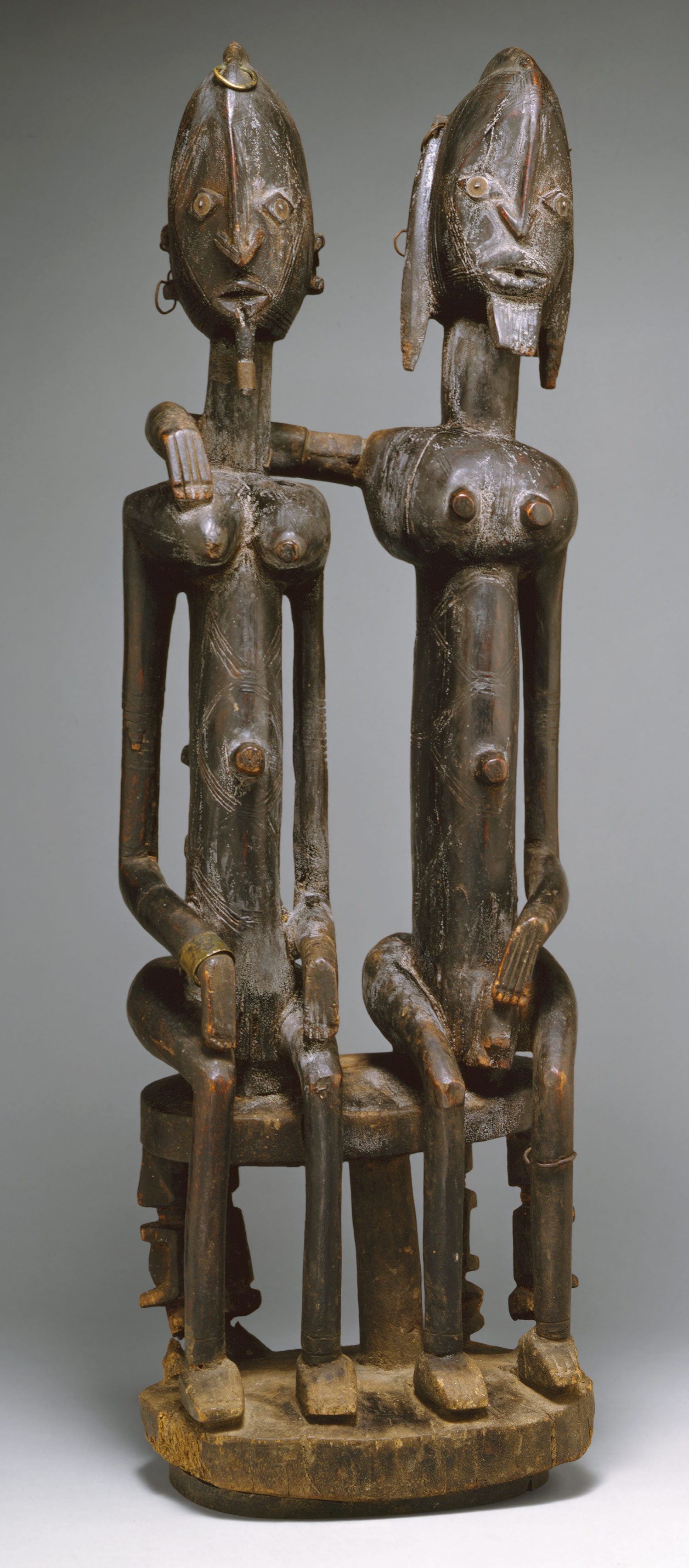This week was a short week for class but, we also had the opportunity to go to the Waterloo Center for the Arts to look at some Haitian artwork. I wasn’t real sure on what to expect but I was pretty satisfied when I was able to see the work in person. One thing that I thought was cool to see in person was the Drapos. Being able to see them in person was much more satisfying than seeing them in class on a projector screen. I was pleasantly surprised at all the intricate detail that was incorporated into them. I did not expect them to be so vibrant in color, and I thought that each piece had good craftsmanship. Looking at the Drapos in person made me think about how much effort goes into making each piece. You can tell these took a great deal of patience and time. It was satisfying to be able to look at the work and understand its meaning and why it was there.
I found that when I was walking through the gallery, looking at the Haitian work, I was excited because I could understand what was happening in most of the pieces. Knowing some of the history behind the work is so important to keeping an open mind and it helps keep you from stereotyping. I liked that I was able to understand for instance, the significance of the crossroads and its meaning. This made me think of the first day of class when we were asked what we thought of when we thought of African art. If I would have gone to the arts center and looked at these works before knowing anything about their past I would have thought simple-minded/ignorant thoughts. As I was walking through other works that were not part of the Haitian collection, I found myself wondering about their history and what things meant. I feel as though this class has helped me to be more open-minded about pieces and has made me want to learn about it instead of just assuming it has to be some “traditional” work. I also think that it would be beneficial for future Arts of Africa classes to go to the Waterloo Center for the Arts before learning about anything and then go back later in the future to see how much your outlook has changed.
In class we discussed the touchy topic of racism. We talked about how our/societies history is a major influence and that there is always going to be a “new” racism. I thing that really stuck out in my mind from class is when we talked about how stores still sell Aunt Jemima waffles. We talked about how that comes from an extreme racist background and once again I feel super ignorant for not even noticing. I think it is sad that things like this still go on and people are completely oblivious to it. We also had to read two different essays for class and in one of the essays it talks about the artists and how he purposefully makes work that proves a point or makes a statement. This brings me back to last week’s discussion when we talked about stereotypes and how people are always going to criticize you.
I think that this week was beneficial and helped me connect everything that we have been learning. I am happy that I had the opportunity to go to the Waterloo Center for the Arts and see first-hand the work that we have been discussing in class.








